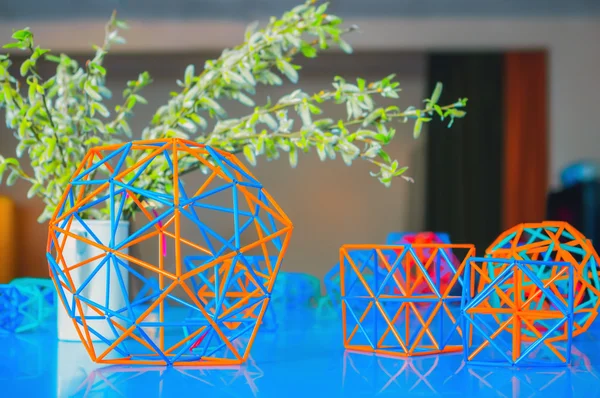
A hexagono is more than just a geometric shape; it’s a symbol of balance, efficiency, and symmetry that appears throughout nature, architecture, and everyday objects. Derived from the Greek words “hex” (six) and “gonia” (angle), a hexagono refers to a six-sided polygon with equal angles and sides when regular. But why does this shape matter? How is it used in our daily lives? This article dives deep into the meaning of hexagono, its practical applications, and its ubiquitous presence in both natural and human-made environments. Let’s explore the fascinating world of the hexagono.
What Is a Hexagono? The Basics and Meaning
A hexagono is a polygon with six straight sides and six angles. In mathematics, it is categorized as a two-dimensional figure, and when all sides and angles are equal, it is called a regular hexagono. This shape is significant due to its ability to tessellate—cover a plane without gaps or overlaps.
The Geometry Behind Hexagono
A hexagono’s geometry is highly versatile. In regular hexagons, each internal angle measures 120 degrees, forming a balanced and symmetrical shape. These properties make it ideal for structures requiring strength and stability, such as honeycombs and tiles. Its symmetry ensures uniformity, making it easy to replicate in both natural and artificial contexts.
Why Is the Shape So Popular?
Hexagonos are efficient because they tessellate perfectly, meaning they fit together without wasting space. This quality reduces material usage in design and increases structural strength, which is why nature and engineers alike rely on this shape.
Why Are Hexagonos Important in Everyday Life?
From the design of household objects to large-scale architectural structures, hexagonos are everywhere. This shape is not just visually appealing but also functional, contributing to its widespread use.
Hexagono in Nature
Nature has perfected the use of the hexagono, showcasing its efficiency and strength in various forms:
- Honeycombs: Bees use the hexagonal grid to create storage cells for honey. This design is space-efficient and requires minimal wax.
- Snowflakes: Snowflakes often display hexagonal symmetry, reflecting their molecular structure.
- Basalt Columns: Volcanic basalt formations, like those found at the Giant’s Causeway, naturally form hexagonal patterns due to cooling and contraction.
Hexagono in Technology and Design
In technology, hexagonal grids are widely used in applications such as:
- Battery Cells: The hexagonal shape maximizes storage capacity while minimizing material usage.
- Gaming Maps: Many video games use hexagonal patterns for navigation and strategy.
- Architecture: Hexagonal tiles and patterns are often used for their aesthetic appeal and ability to tessellate without gaps.
Exploring the Uses of Hexagono in Various Fields
The versatility of the hexagono extends across multiple domains, from engineering to everyday objects.
Structural Efficiency of Hexagons
Hexagonos are renowned for their strength and ability to distribute force evenly. This makes them a preferred shape in:
- Engineering: Materials like honeycomb panels use hexagonal structures for lightweight strength.
- Construction: Hexagonal paving stones offer durability and stability, ideal for roads and walkways.
Hexagono in Everyday Objects
Hexagonos are also found in common household items, such as:
- Tiles: Hexagonal tiles are a popular choice for kitchens and bathrooms.
- Nuts and Bolts: The six-sided design ensures a better grip and easier application.
- Soccer Balls: Many soccer balls use a combination of hexagonal and pentagonal patches for symmetry.
How to Identify Hexagonos in Daily Life?
Recognizing hexagonos in your surroundings can be an engaging exercise. This shape is present in both natural settings and human-made objects.
Look for the Following Characteristics:
- Six Sides and Angles: A true hexagono will always have six equal sides and angles.
- Symmetry: Whether in nature or design, the shape is highly symmetrical.
- Tessellation: Hexagonos often appear in patterns that fit together seamlessly, like floor tiles or honeycombs.
Examples You Can Spot:
- Natural Patterns: Look at beehives or snowflakes.
- Everyday Tools: Hexagonal shapes are used in wrenches and bolts.
- Architecture: Check tiles, window designs, and decorative patterns.
The Science Behind Hexagonal Patterns
The science of hexagonal patterns lies in their efficiency and practicality. This is why they are so prevalent in both natural and technological systems.
Why Hexagons Are Efficient
Hexagons can cover a surface without leaving gaps, making them ideal for:
- Tiling and Flooring: They minimize wasted material.
- Battery Design: The shape allows for compact energy storage.
Patterns in Nature and Design
The repeating patterns of hexagonos are aesthetically pleasing and symbolically significant. From the structure of crystals to modern architecture, hexagono patterns represent balance and order.
Conclusion
The hexagono is a remarkable shape with applications that span nature, technology, and everyday life. Its efficiency, symmetry, and aesthetic appeal make it indispensable in design and engineering. Whether you’re looking at a beehive, a floor tile, or a battery cell, the hexagono proves its versatility and importance. Take a moment to appreciate the hexagono’s role in shaping our world, both literally and metaphorically.
Call-to-Action: Dive deeper into geometric wonders like the hexagono and explore their applications in your surroundings.
FAQs
What is a hexagono?
hexagono is a six-sided polygon with equal angles and sides. It is widely seen in nature, such as honeycombs and snowflakes, and used in designs like tiles and nuts.
Why are hexagonos used in architecture?
Hexagonos are efficient and strong. They tessellate perfectly, saving material and providing stability, making them ideal for paving, tiling, and decorative designs.
How are hexagonos used in technology?
Hexagonal grids optimize performance and space in applications like battery cells, gaming maps, and engineering designs.
Where can I find hexagonos in nature?
Hexagonos are present in honeycombs, snowflakes, basalt columns, and even in microscopic structures like carbon molecules.
Why is the hexagono considered efficient?
The hexagono’s ability to tessellate without gaps makes it ideal for saving space and materials, while its symmetry ensures strength and balance.






